
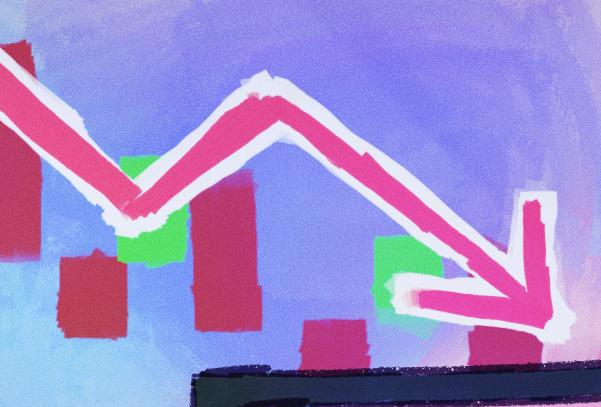
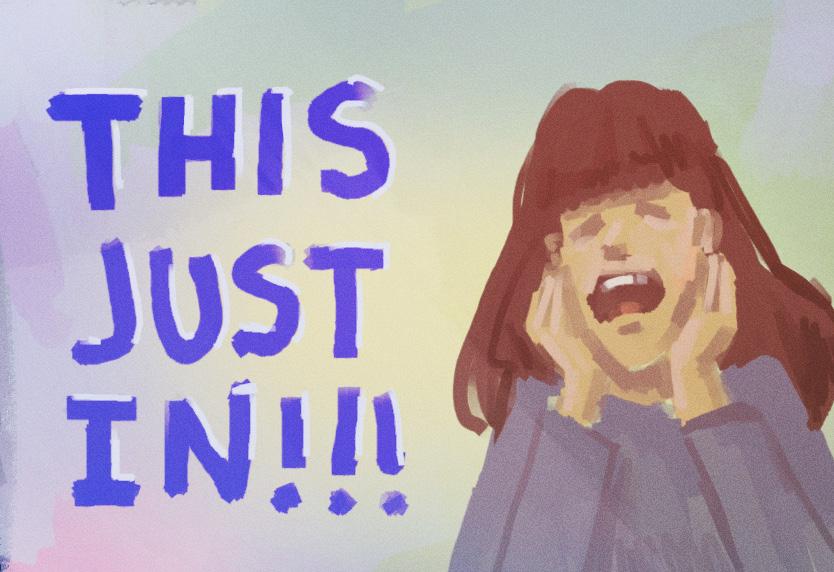

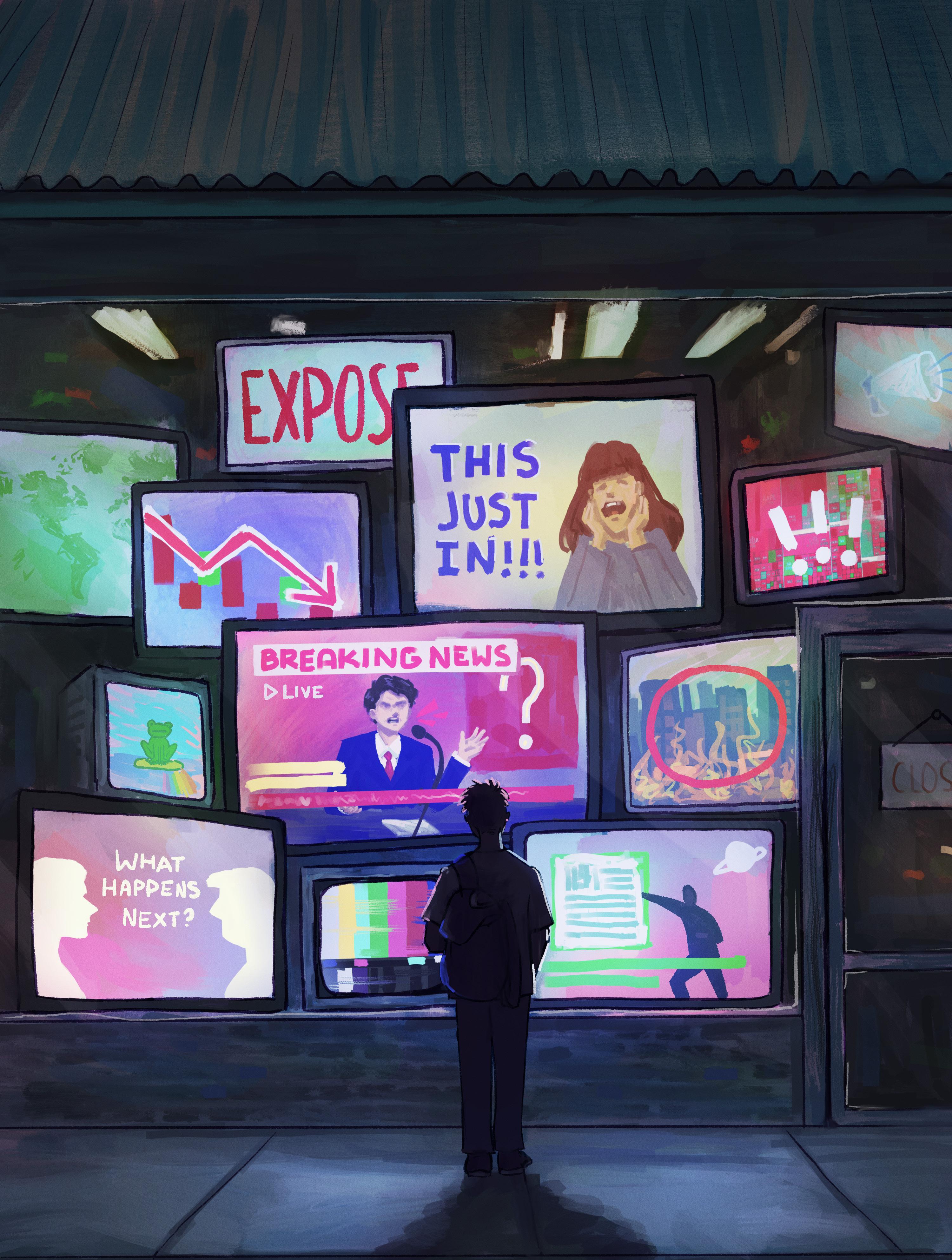
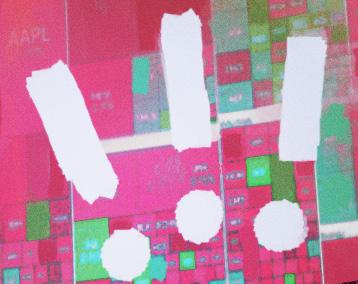
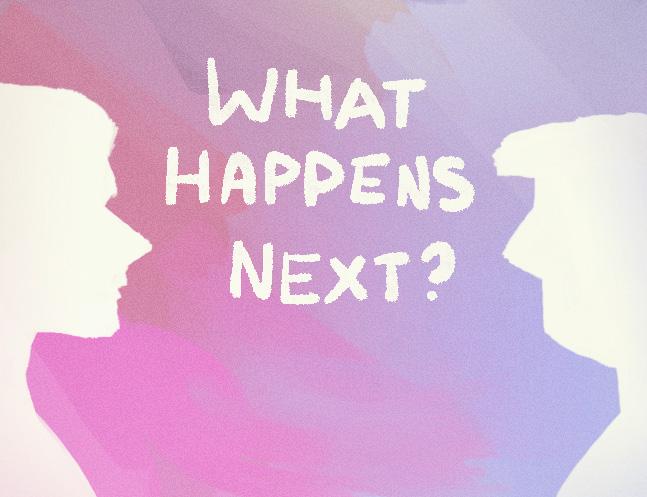
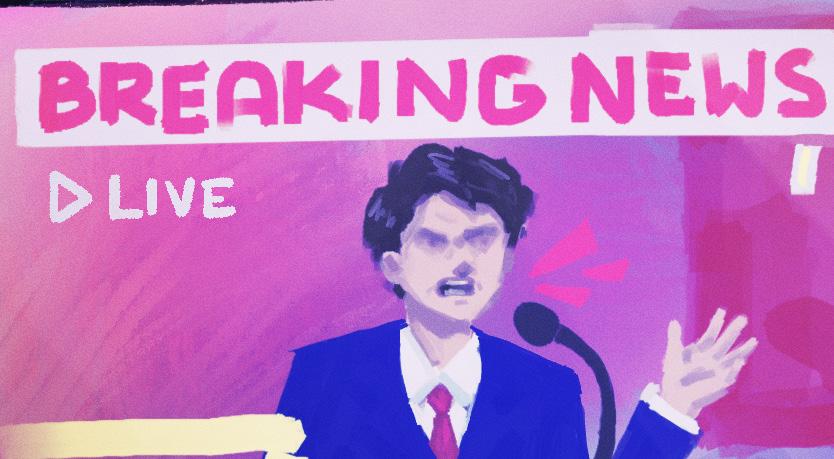
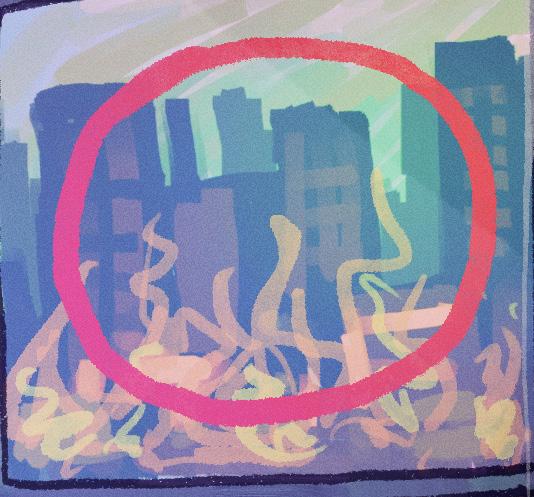










The Syilx Okanagan and tqłəníwt/tqaʔtkʷɬniwt First Nations stated land acknowledgements uphold Indigenous rights and history
LUCAIAH SMITH-MIODOWNIK · NEWS WRITER
Land acknowledgements have become commonplace in Canadian institutions, and universities are no exception. Recently, a group of UBC community members made headlines for critiquing the practice. In early April, professors Brad Epperly, Andrew Irvine, Christopher Kam, Michael Treschow, and PhD graduate student Nathan Cockram took to the BC Supreme Court to petition UBC over the language used in the university’s land acknowledgements.
They cite the University Act, which says “a university must be non-sectarian and non-political in principle.” The petition asks for “an order prohibiting and restraining UBC from declaring or acknowledging that UBC is on unceded Indigenous land.” The claimants also request the court to bar “UBC from requiring or encouraging other persons to declare or acknowledge that UBC is on unceded Indigenous land.”
The request to remove “unceded” from the UBC lexicon is part of a larger appeal to “protect the academic freedom” of UBC community members, as Irvine told The Peak. Land acknowledgements “have been abused, encouraging and often requiring faculty to accept and promote one political position rather than another,” he said.
Those backing the lawsuit argue that recognizing unceded territory inhibits the right to claim “that the xʷməθkʷəyəm (Musqueam) and/or Syilx Okanagan people effectively ceded

their lands” or “fully or partially extinguished” their rights. Unceded territory “means that First Nations people never ceded or legally signed away their lands to the Crown or Canada,” thus making the land stolen by the government. The government of BC cites that “95% of BC is on First Nations land that never had a treaty agreement.”
The petition cites the landmark case Delgamuukw v. British Columbia, which found that “any title the Gitxsan and Wet’suwet’en may have had was extinguished.” While the original ruling resulted in this conclusion, an appeal in 1997 resulted in a rejection of the findings. The Supreme Court ruled “that the provincial government had no right to extinguish the Indigenous peoples’ rights to their ancestral territories” and failed to consider Indigenous oral histories, among other reasons.
To avoid compromising academic freedom, the claimants argue there can be no “administrative interference.” Doing so would “effectively erase the distinction between academic work and political advocacy within the university.”
For Syilx Okanagan Nation Chiefs, the recognition of unceded lands “is not a political maneuver,” but “an acknowledgement of historical truths and legal realities.” The Peak reached out to Chief Robert Louie of the tqłəníwt/tqaʔtkʷɬniwt (Westbank) First Nation and the Union of BC Indian Chiefs but did not
On March 28, SFU announced they reached a Memorandum of Settlement with the Teaching Support Staff Union (TSSU) to add about 1,000 research assistants (RAs) to the current TSSU collective agreement. This is a historic agreement as it is the first one in Western Canada. The Peak spoke with Kayla Hilstob, chief steward, and Derek Sahota, member representative, from TSSU to learn more about the history and impact of this change.
TSSU members include sessional instructors, teaching assistants, faculty of education mentors, and graduate facilitators. The new members will now include up to 1,000 “RAs, and then research support, and other types of grantfunded researcher workers,” said Hilstob. This number may increase following an upcoming BC Labour Board decision. Those added to the collective agreement will now receive the same core benefits as other TSSU members. This includes extended health and dental, WorkSafeBC protections, job security, union representation during disciplinary meetings, an increase in wages, access to the TSSU member child care fund, and many other benefits.
Hilstob said it was a “key priority” for TSSU that all RAs receive the same benefits — something SFU had resisted. In the event that a research grant does not cover RA benefits, a special fund set up by SFU opened May 1 for people to apply to. TSSU was also able to negotiate an international student health fee cover for RAs that will be implemented on November 1, as Hilstob stated SFU refused to cover it now. The Peak reached out to SFU for a statement, but they stated
they did not have a statement to provide aside from their press release.
receive a response by the publication deadline.
In a press release from the Syilx Okanagan Nation Alliance, Chief Louie asserted that “academic educational institutions have a duty to foster environments of truth and reconciliation.” The release also writes that “such acknowledgements align with the 2015 Truth and Reconciliation Commission’s 94 Calls to Action, urging educational institutions to integrate First Nations knowledge and perspectives.” UBC’s approach also aligns with the federal and provincial government’s commitments to the United Nations Declaration on the Rights of Indigenous Peoples, including “recognizing the rights of First Nations to their lands, territories, and resources, and affirming the necessity of free, prior, and informed consent in decisions that affect them.”
“It is clear to us that their claims veiled under the banner of ‘academic freedom’ are, in fact, a thinly disguised attempt to perpetuate harmful rhetoric rooted in racism, bigotry, and historical denialism,” the tqłəníw t/tqaʔtkʷɬniwt Nation wrote in an open letter responding to the lawsuit. “Too often, in the current political and media climate, individuals who resist the most basic principles of reconciliation and human rights attempt to cloak their actions under the guise of free speech.”
At the time this article was written, UBC has not yet filed a response to the lawsuit.

Those who have been added to the collective agreement will now receive the same core benefits as other TSSU members.
The unionization of research assistants has been a long road, going as far back as 1978. The latest effort started in 2014 with TSSU’s “Research is Work” campaign, which involved internal discussions between RAs and TSSU. Summer 2019 saw the campaign go into full gear with mapping departments and card signing, and a public launch with postering, social media, information sessions, and rallies. After SFU voluntarily recognized RAs in November 2019,
several unsuccessful bargaining sessions occurred centering a debate around who should be considered a research assistant and what work was being done.
TSSU escalated their strike action in 2023 to a full work stoppage, followed by bargaining being renewed for the fall 2024 term. The recent Memorandum of Settlement is the result of this latest round of bargaining. This is a “legal document that forms part of the collective agreement and highlights changes from the previous collective agreement.”
Sahota said there are still around 800 graduate students and workers funded through specific SFU grants yet to be counted as employees. This decision was to be made by the Labour Board mid-April, but has not been announced. Sahota noted that recognizing these students has been the “crux of the issue back all the way to 2019,” with RAs being “critical to the research enterprise of SFU, but they [SFU] continue to object.”
The current SFU-TSSU collective agreement expired on April 30, however, its provisions will carry forward until a new agreement has been bargained. TSSU has submitted notice to SFU to begin bargaining, hoping to begin this summer.
The union says the draft policy does not reflect the community’s needs

Earlier this year, SFU released an updated version of their Intellectual Property (IP) Policy for community feedback. The Teaching Support Staff Union (TSSU) released a public petition against the proposed changes on March 14, stating that, among other things, the new policy would “see the university steal the IP of teachers, researchers, and students across the university, without our consent.”
The current policy, approved in 2004, defines that IP is “the result of intellectual or artistic activity, created by a university member in a scholarly, professional, or student capacity, that can be owned by a person.” It goes on to state that this kind of activity can include “inventions, publications (including scholarly publications), educational materials, computer software, works of art, industrial and artistic designs, as well as other intellectual property rights.” This includes copyrights, trademarks, and patents.
After the draft policy was posted online, TSSU provided their concerns to SFU directly and later launched the petition. Sometime afterward, SFU’s draft was removed from their website, and an FAQ response was put up on April 10. SFU cited that the policy is over 20 years old and they aim to amend it to “enhance innovation, creativity, and transparency in research and innovation.”
In the current policy, SFU notes it “retains a royalty-free perpetual right to use for scholarly, academic, and other noncommercial purposes all IP created through use of university resources.” According to the new proposal, a commercial purpose would involve a third party and could involve “assignment, licensing, manufacturing or production of IP” as well as creating a separate company. While the new policy states that educational material belongs to the creator, SFU also added a clause stating they receive a royalty-free noncommercial license.
The Peak spoke with Kayla Hilstob, chief steward, and Derek Sahota, member representative, to discuss their concerns around section 5.1.1a of the draft policy. “The new policy proposal says anything arising from employment duties is
SFU’s, and that’s a very, very broad capture. It doesn’t even mean you actually do it as part of your employment duties, it just arises from,” said Sahota.
The new policy proposal says anything arising from employment duties is SFU’s, and that’s a very, very broad capture. It doesn’t even mean you do it as part of your employment duties, it just arises from.
DEREK SAHOTA MEMBER REPRESENTATIVE, TSSU
Comparing the current policy with the proposed changes, details have been reduced. The Peak reached out to SFU for a statement, and was directed to their Frequently Asked Questions (FAQ) page. In question four of the FAQ, SFU responded to concerns about IP ownership by stating that it gains the IP rights to anything developed under employment duties, but that “faculty retain full ownership of their creations outside of university-assigned work.” The FAQ lists a few examples, such as “brochures, commissioned studies, or descriptive handbooks, whose production was commissioned by the university,” though voided from the new draft. As such, TSSU raised concerns as to whether course material created by an instructor today would be used by SFU in the future after that person has moved on. In 2021, at Concordia University, a student took a course overseen by one instructor and two TAs,
only to find out the course videos they were watching were created, recorded, and presented by an instructor who had passed away two years prior.
When asked about the benefits of SFU’s current IP policy, Sahota said, “Giving [workers] control over their own IP allows for the greatest amount of innovation, development, collaboration, and the best resources. It’s a grassroots model of those workers, whether they’re faculty, researchers, students together, not a corporate model of ownership from the top-down directing everything.
“That is different, but it’s what’s made universities so successful across the world — to become these developers of knowledge, developers of places of education, places of learning. And so it is different, it has worked at SFU for decades,” he continued. The current policy stresses the responsibilities of the university to provide safeguards for the equitable protection and distribution of property, collaboration, and fairness. Sahota stated that “the existing policy and SFU’s model of IP is it’s really egalitarian, that reflects the radical roots of the university. It applies to all, whether you’re a student, or you’re a faculty, staff, you’re precarious, or continuing, you get these rights.”
With the change in SFU’s IP policy concerning different groups at SFU, Sahota noted, “This process is completely and fundamentally flawed” by not directly involving TSSU, the Faculty Association of SFU, and others in developing the changes. “The changes that are being made to policy should be coming from us, not be directed at us. This policy change isn’t addressing a need that the community has found, and that should be the start of the policy process,” he said.
When asked what TSSU’s next steps were, Sahota said the petition has been submitted to senior administration, and SFU has paused the update to the policy. TSSU wants to “build pressure and momentum” to ensure that if the policy is brought back, the community is “aware and prepared to make sure the policy meets the demands of workers, meets the needs of the university and doesn’t have this corporatization built into it.”
YILDIZ SUBUK · STAFF WRITER
A recent report from the Canadian Association of Physicians for the Environment revealed that 39 different fossil fuel companies across Canada have significantly influenced youth’s climate change education — that is 39 too many. Enbridge, TC Energy, and Fortis BC were among the companies named. Young children are our future collaborators and leaders in a climate that is rapidly changing in harmful ways. Children are especially vulnerable to pollution as they breathe more and have smaller airways; pollution increases their chances of respiratory infection. Still, the education surrounding pollution is hardly ideal — it’s funded by the very companies that profit from it. Young people deserve a wiser approach to a factor that will not only impact but dictate their futures.
“Petro Pedagogy” is used by the report to describe the different messaging strategies employed by fossil fuel companies. Since the 1990s, the industry has shifted from climate denial towards climate delay. The industry initially focused on attacking climate science, but soon realized that growing activism and public doubt in fossil fuels meant they needed a new approach to combatting climate change evidence. They resorted to strategies like “greenwashing” and “bias balance” to exert their influence. Greenwashing is the use of misleading information to make a company’s product appear sustainable, and a biased-balanced approach ensures that lesson plans are framed to include the industry’s perspective to appear less “biased.” This false neutrality positions the industry’s right to destruction as equal to our right to sustainability. Among these approaches peddled to Canadian classrooms, there is also a focus on lessons that shift environmental responsibilities to the
ANTI-WOKENESS

individual consumer rather than addressing harmful policies and corporations.
The curriculum successfully uses greenwashing to make oil extraction seem sustainable and further shifts the blame to consumers for needing and being economically dependent on fossil fuel energy.
For example, Imperial Oil has hosted workshops for tree planting in Sarnia, Ontario, a community they have actively harmed with pollution from their oil refinery. The company gloats about sustainability on its website while polluting so heavily that Sarnia has an area known as the “chemical valley.” Through educational sponsorships and “opportunities” like these, companies build a seemingly respectable rapport with educational institutions and in communities. They appear charitable as a way to divert criticism. In 2014, Suncor partnered with Alberta’s provincial government to create curricula for kindergarten to grade three students, while
Funding education isn’t optional
Throughout their federal election campaign, the Conservative party has been promoting an “anti-woke” agenda. It draws similarities to US Republican politics, especially regarding education. They provide no definition of what constitutes “woke” or any real acknowledgement of where the term originates from — instead, the term is prompted as a faceless threat. While the Conservatives lost the election, falling 26 seats behind the Liberals, it is concerning that they are attacking education through divisive rhetoric in the sphere of mainstream politics. The attack on “woke” is an attack on free thinking, as the term itself has to do with the process of becoming educated.
The term woke originates from the civil rights movement and first alluded to becoming “woke” to the injustices that surround us. It is literally the past tense of “wake up,” referring to the notion that we were previously unaware of an unjust reality (“asleep”). In a contemporary context, the term is still used to highlight the importance of addressing societal issues. However, the term has been painted as negative by far-right groups who associate it with institutional control. In an interview with PBS, economist Jessica Riedl from the Manhattan Institute described Trump’s proposed budget cuts as a clear reflection of his “governing philosophy.” It is essentially a “war on woke.” In the budget report the term is mentioned 12 times and is used pejoratively.
The cuts proposed by the Republican party have to do with slashing funds to underrepresented areas within STEM, such
as environmental research and work around economic equity. Nearly $12 billion is proposed to be cut from the Education Department, and $1.8 billion has already been cut from the National Institute of Health (NIH). Before the cuts, NIH was a thoroughly peer-reviewed and reliable source for health related information and provided accessible knowledge for many, yet it was described as “too big and unfocused” by Trump.
In Canada, Conservative leader Pierre Poilievre has vowed to end “woke” ideology. In their costed platform, the party stated their intention to “put an end to the imposition of the woke ideology in the federal public service and in the allocation of federal funds for university research.” This plan is eerily similar to Trump’s rhetoric. Poilievre claims in an interview that the term woke “divides people into these different groups.” The framing of the word woke by the party leader is troubling as it completely distorts what the word means. He has deliberately created misinformation around the term as a way to strike resentment towards progressives and create distrust in academia. During a time where inequality grows, the Conservatives’ pledge to cut research funding is a step backwards.
While the Conservatives will not be in power, it is important that they work on their messaging. With more than eight million of the population’s vote, the party still has strong support in Canada — especially with 57% of Canadians disagreeing with equity and inclusion initiatives, which aim to lessen barriers for marginalized people by providing better
Cenovus partnered to take care of grades four through 12. As of 2024, the province’s curriculum is to include that Alberta has a “reputation as the most ethical producer of oil in the world” while also reinforcing that energy is essential for the economy. The curriculum successfully uses greenwashing to make oil extraction seem sustainable and further shifts the blame to consumers for needing and being economically dependent on fossil fuel energy. What if instead, we encouraged our youth to innovate alternatives in the face of ecological disaster?
According to Statistics Canada, 62% of Canadian youth agreed climate initiatives should be a top priority. Organizations like Climate Education Reform BC have also emerged as youth mobilize — clearly, they are concerned. However, only 34% of educators feel confident when it comes to teaching about environmental issues. Provincial budget cuts to education are a major factor when it comes to addressing the gap in climate education. Because of these cuts, schools lose valuable funding which would otherwise go to strengthening educational plans. This makes room for the fossil fuel industry to invest in education. Sustainability within the curriculum can only be achieved once schools do not rely on funding and sponsorships from private corporations. Instead of allowing industries to influence and damage our futures, the provincial government should focus on providing adequate resources for educators to tackle the issue. But first, that means we need to convince our peers that education is worth voting for.

access to jobs and education. The attack on education, especially that which addresses important topics around inequality, should not exist within the party’s platform. Weaponizing the word woke as something dangerous is the true divisive messaging. If the party does not want to be seen as “far-right” or aligned with American Republicans, they need to stop co-opting their approaches.

LET’S REIMAGINE JOURNALISM ROOTED IN CARE AND COLLABORATION
ASHIMA SHUKLA · STAFF WRITER
BY GIVING PEOPLE ACCESS TO FACTS, IT WAS MEANT TO FOSTER AN INFORMED CITIZENRY, SO PEOPLE COULD BE BETTER EQUIPPED TO PARTICIPATE IN DEMOCRACY.
We find ourselves in a world where news media thrives on crises. Headlines are designed to scare, intimidate, divide, and most of all, keep us clicking. Across the world and the political spectrum, people are quick to claim “the other side” is full of lies. In this post-truth reality where even objectivity feels slippery, what is our responsibility as journalists? What might it mean to “speak truth to power,” when that act might get you detained or even killed? And how can journalism help rebuild trust, especially with people who disagree?
When I was 12, I joined a summer school journalism program. One of the first things I learned is that journalism isn’t only about reporting facts, it’s also a business. An interesting lead often took priority over the dull yet important work. At the time, this lesson was painful and disappointing; it deterred me from a career in journalism. Today, it’s what drives my writing — to critique, not just in theory but also in practice, how political and economic forces shape, and are shaped by technologies that produce information.
In a way, the task for journalists today is a Sisyphean endeavour. In Greek mythology, Sisyphus was a man punished by the gods to roll a huge boulder up the hill, only for it to roll back down every time. An eternity spent trying. Finding, let alone telling, the truth today is like pushing that boulder uphill. With each issue, we might think we’ve clarified something previously overlooked. But, with each moment after publication, new storms emerge and undo the work we’ve done. Yet, we persist. Why? Because, if journalism is to be a tool for solidarity, we must gladly spend eternity trying.
Why we stopped trusting the news
Amid the ideals of democracy, journalism has been called the “fourth estate” by Burke when referring to the division of power between the three estates of the British parliament. Journalism, a powerful watchdog holding the government accountable. It was meant to foster an informed citizenry — one equipped to participate in democracy — by providing citizens access to factual information; an always imperfect ideal. After all, who determines these facts? Who has been allowed to be a voice of knowledge? Whose stories get centred, and who is expected to provide the pain? The spectacle? The statistics? Whose version of truth gets published, and whose gets edited, mistranslated, silenced, erased?
News organizations don’t work alone — they are embedded within broader systems that include governments, corporations, social norms, and societal structures. Prominent scholars, from Michel Foucault on the entanglement of power and knowledge to Noam Chomsky’s Still Manufacturing Consent, have shown how the media often supports those in power, even when disguised in “neutrality” or “objectivity.” Now, more than ever, this hollow ideal of journalistic objectivity is exposing the cracks in the foundations of the field. They remind us that truth isn’t neutral, it has a history tied to power. However, I don’t think this is something to lament. Perhaps it is only when we move beyond this performance of objectivity, which ultimately serves those in power, that we may begin to rebuild trust across political lines. If we want to rebuild journalism to serve democracy, we must begin by asking: democracy for whom?
A journalism of care
In envisioning this journalism of care, I wonder, what might it look like if we replaced breaking news with slowing down, sensationalism with listening deeply, commodification of people’s stories with empathy and respect for lived
experiences? Perhaps this is what real democratic accountability looks like: a journalism of care that acknowledges biases, that recognizes truth can look different depending on where one is standing.
The journalism we need today must confront epistemic injustices, a concept coined by Miranda Fricker to describe the ways in which people are wronged in their capacity as knowers. In many newsrooms, this plays out as the repeated erasure or tokenization of Indigenous communities, racialized immigrants, 2SLGBTQIA+ individuals, and others whose voices have been historically silenced — what postcolonial theorist Chakravorty Spivak calls the subaltern. When journalism speaks for rather than speaking with people, it reproduces the very silence it claims to challenge. In her seminal essay, Spivak famously asked, “Can the subaltern speak?” — a challenge to how dominant institutions can represent the oppressed without reinforcing their marginalization. To answer yes, journalism must begin with listening — not for quick quotes but for context, history, and power. It means treating community knowledge like oral traditions, lived experiences, and collective wisdom not as “human interest” stories but as legitimate forms of expertise rooted in ways of knowing that have often been dismissed.
In doing so, transparency and reflexivity become vital. Transparency to explain how stories are sourced, whose voices are centred, and the editorial choices made behind the scenes. Reflexivity to turn the lens back on the journalist and their positionality: to ask how our identities, assumptions, and institutional ties shape the stories we tell. As scholar Linda Martín Alcoff wrote for The New York Times, truth is better reached through “a receptivity that holds back on disagreement long enough to try out the new ideas on offer,” rather than through adversarial arguments. This kind of openness is what builds trust, not by claiming authority but by inviting accountability.
In contrast to corporate media cycles that chase immediacy, journalism of care resists the pressure to produce viral content at the expense of depth. This is the kind of work we see in independent outlets like IndigiNews in Canada or People’s Archive of Rural India. This kind of slow journalism is often rooted in the community. It is relational and cumulative. It might not “break” the news, but it does build understanding over time. In building trust as a news platform, it is vital we learn to sit with sorrow, and resist the capitalist drive to turn human suffering into headlines to be forgotten by the next news cycle.
This is why I imagine this journalism of care as co-created and participatory. When done ethically, citizen journalism and community media offer a model of participatory storytelling that builds trust from the ground up. In India, for instance, Khabar Lahariya, a rural women-led news outlet trains local women to report on issues affecting their own communities. From covering caste-based violence to the lack of rural infrastructures, these journalists are not “parachuting in” but are already embedded in these struggles. It is only when journalism can thus redistribute power, by insisting that people are agents of knowledge, that we can foster solidarity.
The culture of distrust and distortion in today’s media is a cry for help, a demand for better. Readers are looking for news publications to move beyond rage into understanding. They want stories that challenge injustice but also help them make sense of a world in crisis. Journalism of care is not soft or sentimental. Instead, it confronts injustice with clarity, compassion, and care. It recognizes that even though there isn’t a neutral truth, examining and unpacking it still matters. The boulder is heavy, and the hill is steep. But in inviting the community to support and co-create with us, we might just push it uphill a little easier, a little further.
Yildiz Subuk • Staff Writer
Small businesses contribute to local economies by offering unique products, innovations, and creating job opportunities. In Canada, they employ over five million people throughout the country and make up nearly 98% of all businesses. However, the narrative around small businesses often focuses on the owners, and ignores the employees.
CEOs and small business owners have some key differences. CEOs are often chosen by a Board of Directors, which is made up of investors who oversee a company’s entire vision. Small business owners are those who create and manage a business at a smaller scale, and tend to be more “hands on,” as they take charge of hiring, payroll, and other administrative roles. Both positions share a key similarity: they rely on the labour of others to grow their companies. Employees are the ones putting in the labour to sustain and grow the business. Businesses are built on the backs of the workers, who are often subjected to lower wages and limited benefits. While the growth of small businesses is important, emphasis must also be placed on improving conditions for the workers who are directly responsible for their success.
Although small businesses open up new job opportunities for locals, that doesn’t inherently mean they ensure the best labour conditions for employees. While there are obvious exceptions to this idea, there is clear evidence that small businesses don’t provide better work environments compared to large businesses. This doesn’t excuse the fact that many large corporations engage in unethical practices, but it does provide perspective into how small businesses are part of a capitalist system that relies on the control and exploitation of workers.
Small business owners have a tendency to micromanage, monitoring their employees day-to-day tasks. Micromanagers often focus on critiquing instead of providing productive feedback. A small business owner wanting to micromanage makes sense because most small business owners are hard workers, who want to ensure everything is up to standard. The problem lies in the fact that micromanaging can cause a drop in job satisfaction and morale. While it is understandable for business owners to prioritize quality, efficiency, and cost-effectiveness, constant micromanagement can be extremely frustrating for their employees. At the end of the day, workers remain the driving force to success. In order to
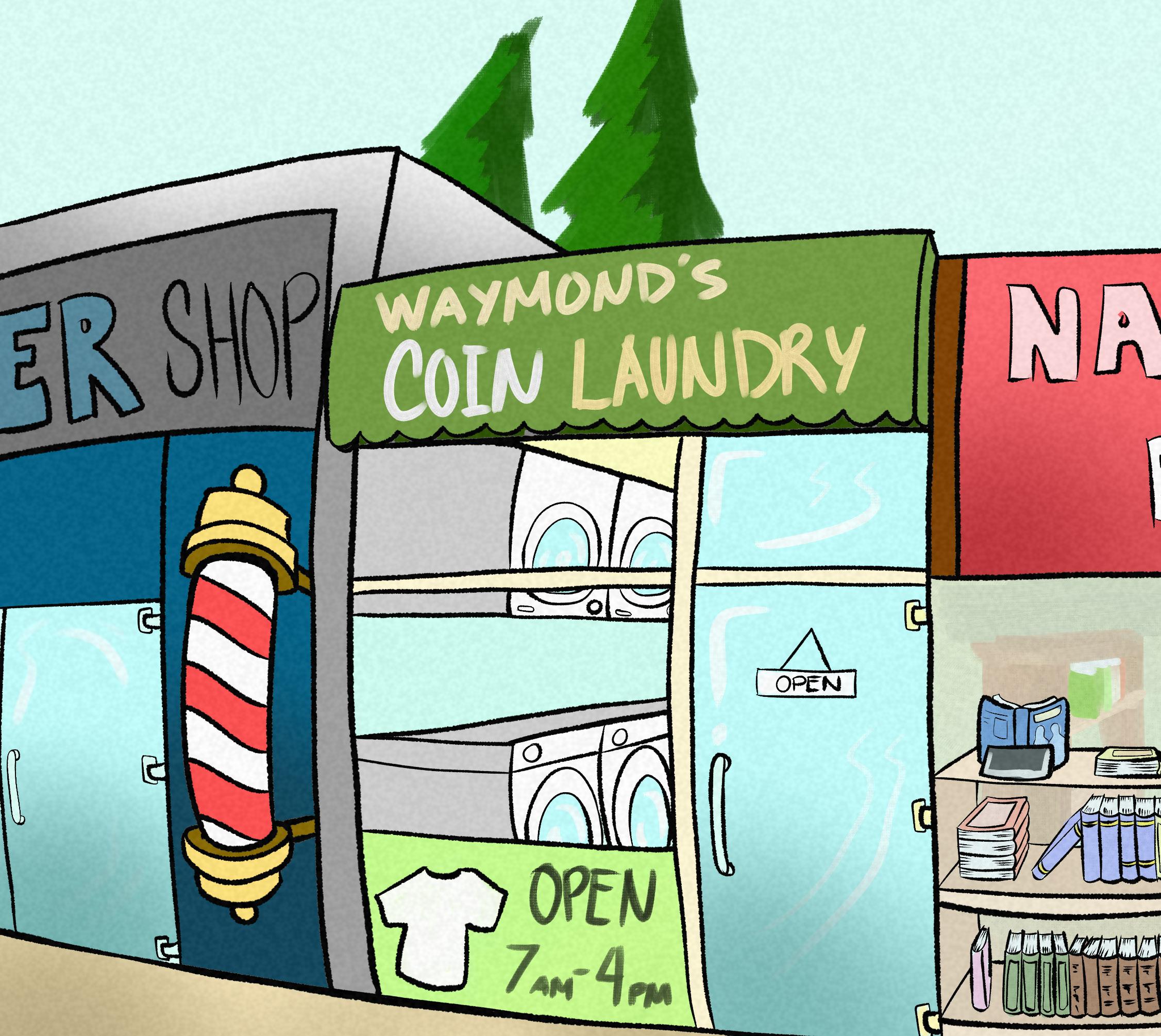
From camera sales to comedy shows, start your summer semester off with these local events
OSNA HADEF · SFU STUDENT
Kids Market, 1496Cartwright Street,Vancouver May 17, 11:00 a.m.–3:00 p.m.
Free registration via Eventbrite
Soumak Boutique’s Turkish Coffee on Hot Sand pop-up is happening on May 17, bringing the traditional art of coffee brewing to Vancouver for all coffee lovers! With just $5.50 for Turkish coffee or $2.50 for Turkish tea, you can sip your coffee, soak in the atmosphere filled with Middle Eastern music and tradition, all while enjoying a complimentary piece of Turkish delight! While you’re there, make sure to try your hand at a handmade Syrian mosaic board game, and don’t forget to browse the boutique’s collection of handmade ornaments, wall decor, kaftans, Turkish towels, and more.
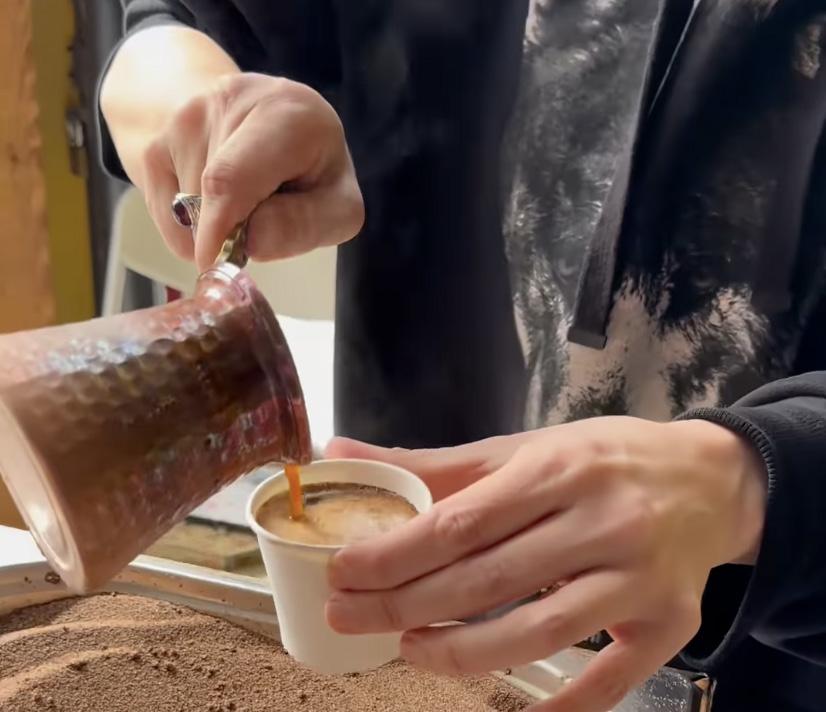
Shadbolt Centre ForThe Arts, 6450 Deer Lake Ave, Burnaby May 17, 11:30 a.m.–2:30 p.m.
Free registration via Eventbrite
Explore the Century Gardens of Shadbolt Centre at Deer Lake through your film camera lens with London Drugs and Fujifilm. While enthusiasts are encouraged to bring their gear to capture awesome photos of the garden on film, it is also an opportunity for everyone to test-run a good selection of Fujifilm camera gear and their latest offerings. A reminder to bring a piece of government-issued ID and a credit card, and geek away at your favourite film photography gadgets! Passion for film photography is all it takes to participate — no pro skills needed!

1181 Davie Street, Vancouver May 22, 8:00 p.m.–9:30 p.m.
Tickets: $11.98 and $17.31 via Eventbrite
Start your semester on a joyful note — with real laughs, not the stressed-out kind. Featuring a hilarious lineup including Aryn Mott, Nora Vision, Conor Meadows, PIOTR, Anaheed, Anna K, Eden Kaminski, and Gabriel Vill, StandUp is sure to be a show of non-stop fun and positive energy before you dive back into your laptops and textbooks!

1055 West Georgia Street, Vancouver Every Wednesday, 6:00 p.m.–8:00 p.m.
Burrard Toastmasters has been one of Vancouver’s leading public speaking clubs, helping individuals develop their communication and leadership skills in a supportive environment since 1958. The club meets every Wednesday for a two-hour session, where members practice public speaking, present their speech on any topic of their choice, and receive constructive feedback from the club’s speech evaluators. This is the place for you if you’re looking to boost your self-confidence and public speaking, as well as if you are keen on expanding your network. And the best part? You can drop in sessions for FREE, as many times as you’d like as a guest!

A soundtrack to help you find wisdom in your unease

ILLUSTRATION: NOAH JOZIC / THE PEAK
“Fruits
of Disillusion” by Yves Jarvis
To start, “Fruits of Disillusion” is a slow and meditative unraveling. Montreal-based multiinstumentalist Yves Jarvis creates music that feels like watercolour running across Hegel’s Phenomenology of Spirit, the famously unreadable guide to human consciousness. Whether you are sitting watching a dying tree or staring at the bumps and cracks in your ceiling, Jarvis helps you get in touch with what it feels like to watch the world bend out of shape.
Driving through X̱wáýx̱way (Stanley Park) this morning, I noticed something that jolted me out of my usual daze of cherry blossoms and sunkissed daydreams: trees, felled and fallen. The ones standing didn’t look much better, thin and brittle with decay. Their slow death is thanks to hemlock looper moths. Some have been removed. Others stand with abated breath, one spark away from igniting, a few moments away from decomposing and breathing new life into the soil. They stand there, witnessing their own undoing.
The quiet horror of the remaining stumps of the once majestic trees mirrors the disquiet brewing in my mind for months now. Spring time in the city is a renaissance of pink confetti and community. But one thought has always clung to me like floating pollen during these few months. Are we also standing in witness to our own undoing?
“The
Big Machine” by Angélica Garcia
With Salvadoran and Mexican American heritage, Garcia stirs dread and hope with her every note. Blurring genres, “The Big Machine” combines a Latinx futurism with haunting synths in both protest and prayer. Otherworldly with hypnotic vocals, this song recalls Bob Dylan’s “jingle jangle morning” if the Tambourine Man were a cyborg.
If you find yourself filled with a gnawing existential dread this spring, know that you are not alone. In the spirit of indulging in the absurdity of it all, I offer a soundtrack for sitting with your discomfort. These songs might not soothe you but they will offer you company as you look into this beautiful and broken world, and prepare for all your battles ahead.
Instead of finding in the spring blossoms a mockery, let us learn from their stubborn survival. Let these songs remind you that sometimes resistance looks like embracing absurdity in the face of collapse. As Camus has said, “The only way to deal with an unfree world is to become so absolutely free that your very existence is an act of rebellion.” I hope these songs help you achieve just that.
“I am a Mountain (don’t be afraid)”
by
Thanya Iyer
Blending jazz, chamber pop, and experimental textures, Iyer’s songs are like spells. “I am a Mountain (don’t be afraid)” offers a slow burn of revolution — a reminder that sometimes resilience is all about allowing the flow of change. Iyer invites us to ground ourselves but also to reach up, to come to terms with our fears but not be ruled by them.
“Nada”
by Lido
Pimienta
Colombian Canadian artist Lido Pimienta’s influences vary from traditional Indigenous to Afro Colombian, part electro to part soul. With grief and the grit of survival, “Nada” is a quiet anthem of soft and stubborn strength.
Zainab Salam · Correspondent for Misguided Student Movements
As Canada’s top university for innovation, it’s unsurprising that SFU attracts visionary students. Today, we’re highlighting an SFU student with the potential to change the world.
I am reporting from the Student Union Building, where a student activist group has begun a passionate campaign with one mission: to protect the grey of SFU’s walls. They declare the grey concrete aesthetic as a vital aspect of SFU’s identity. The group plastered posters all over the Burnaby campus to advocate for what they deem to be the superior university design. I can see the confusion of passerbys, as they see the “Make Concrete Cool Again” protest sign, held by a student activist in Convocation Mall.
I managed to snag one of the group’s unofficial spokesperson and SFU psychology student, Xan, for an exclusive interview.
Q: What inspired you to join today’s protest?
A: A vision of structure. I was walking down AQ halls last month, and I was overcome. The beauty of the grey walls. The quiet dignity of poured concrete. I knew then, I must serve!
Q: Serve . . . concrete?
A: No. Serve the students. Through concrete.
Q: Right. OK . . . What is your favourite part of the university?
A: The walls are my favourite part. Specifically, the right side wall of room AQ 5007. There is a water damage stain on the fourth quadrant. I also have a soft spot for the second level of the Bennett Library. The vibes there are immaculate!
Q: What are you proposing to improve?
A: I am highly committed to making this campus better. Since I started attending this university, I found myself enamoured by the structure and colour. It’s soul-soothing. I believe all renovations on the Burnaby campus should be halted immediately as they pose a risk to the tradition and promise of
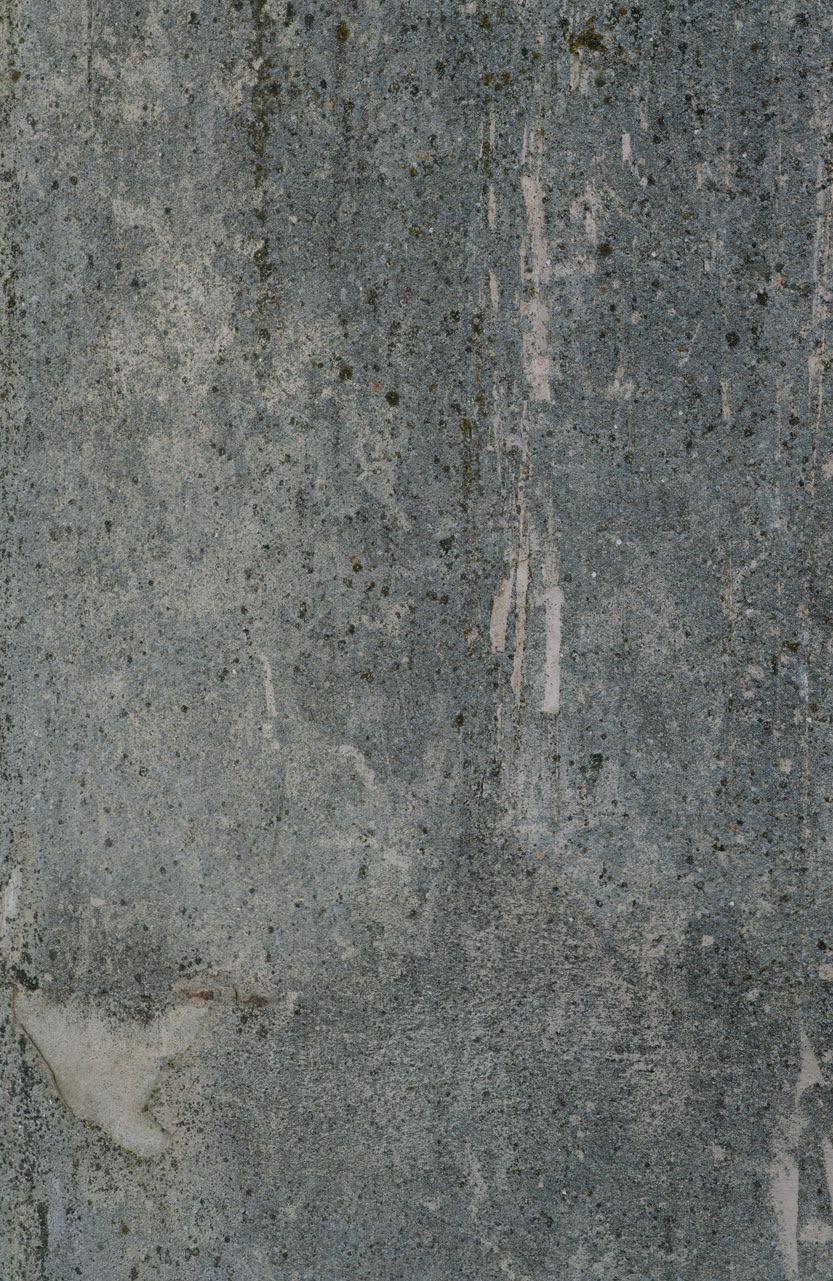
our walls. Instead we should focus on making the Vancouver campus more natural. More grey. We need to do away with the whitification of walls!
Xan leans over and strokes the wall beside us with unnerving tenderness.
Q: So, who inspires you?
A: I think no one is as brilliant as Arthur Erickson! He revolutionized the way we approach educational spaces. May his angular legacy never be forgotten. Do you know what inspired his design for SFU? Brutalism. True brutalism. Not the watered-down minimalism they’re peddling downtown. Think of your experience walking down the halls of Vancouver’s campus or, worse, the Surrey campus. Too bright. Too uncultured. It’s like being attacked by a fully bright screen right as you wake up at 1:00 a.m. for a midnight snack. Both campuses are missing the distinctive grey that pulls people to carpe diem. I propose we erect a 15-foot-tall statue of Erickson mid-sketch. It’s necessary to commemorate the legendary fellow. I also think a mandatory concrete appreciation course in FASS would do us some good.
Q: That’s bold! And what would you say to critics who might not like your focus on SFU’s walls?
A: I say — without walls, what is a university? Just a gathering of people. Maybe attaining knowledge and forming connections. But how helpful is that?
Q: Do you have anything to say to the students of SFU?
A: Next time you’re braving the storm with an overpriced Blenz coffee cup in one hand and a Monster energy drink in the other, think about the battles that were fought to provide you with the perfect grey environment. Join our movement. Help us restore the concrete, my dear comrades.
Follow his TikTok account: @Loving.the.Walls_SFU


Hey Burnaby Mountain dwellers. Gossip Peakie here. Your one and only source for the scandalous and juicy tea being split all over campus. You might be wondering, who am I? First of all, thanks for the question. I love living rent free in that cluttered mind of yours.
Think of me as your friend — the kind of person you’d share a plate at the Dining Commons with. Yet, I am also your enemy. I’ll hype you up on Instagram and then come here to blog about how hideous that new cardigan looked on you. So, Peakies, I guess you can call me your newest frenemie.
Watch out and keep your head on a swivel, because I have eyes everywhere. On the back of the 145, in the stairwells of the AQ, and even in your residence’s broken laundry machine.
And the tea? It’s real. Your reputation if one of these stories is about you? Hanging by a thread. Enjoy my debut column as we enjoy the start of a new semester.

Spotted: A computer science student bathing in the convocation mall fountain before the start of the semester. The worst thing is the water fixture wasn’t even on when he first jumped in. I get the need for these guys to take a bath, the comp-sci stench is real. He had to wash off those Dorrito-stained fingertips and avoid another bout of carpal tunnel from all that typing. But like, during a semester break? Make it make sense. Maybe he was too busy building his AI-generated portfolio.
Just in the nick of time, someone from facilities ran over to try to stop Fountain Dude. “You know this is recycled toilet water!” the custodian shouted. He just continued to splash around in the shallow water. I feel bad for the water for having to be exposed to this guy.
ILLUSTRATIONS: Victoria Lo / The Peak
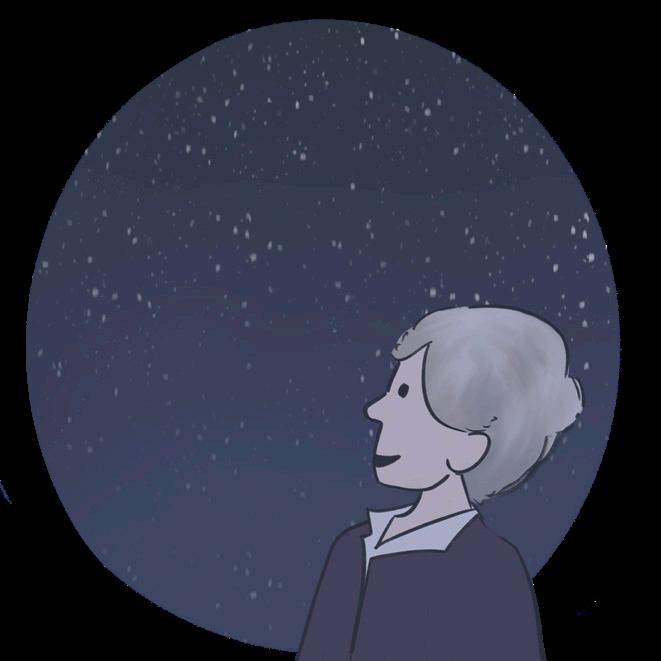
Spotted: Joy Johnson in the Trotterier Observatory at 2:00 a.m. staring at the stars. With the door left ajar, one of our correspondents asked Joy what she was looking for. Her answer: hope.
With the university deep in a $20 million deficit for the upcoming school year, perhaps our favourite president thought the stars were deceased Hollywood stars. Sorry, Joy. I don’t think the iconic Marilyn Monroe is ready to cough up $20 million to increase your salary.

Spotted: Lonely Boy performs mouthto-mouth on a mannequin from the SFU Bookstore. At least, we thought it was mouth-to-mouth. Within a matter of seconds, it was a full on make out sesh in front of students who were picking up their textbooks.
The mannequin was absolutely plain with no facial features. Maybe that’s his type — mannequins that don’t speak.
Rumour has it that the guy began playing the full-length Grey’s Anatomy theme music on his phone to set the mood.
“I’m not going to lose you! Stay with me!” he cried. To be fair, that’s the most commitment we’ll see from any SFU student this semester. It’ll probably be the most action he’ll get all semester.

That’s all for now, besties. You know you love me. XOXO, Gossip Peakie.